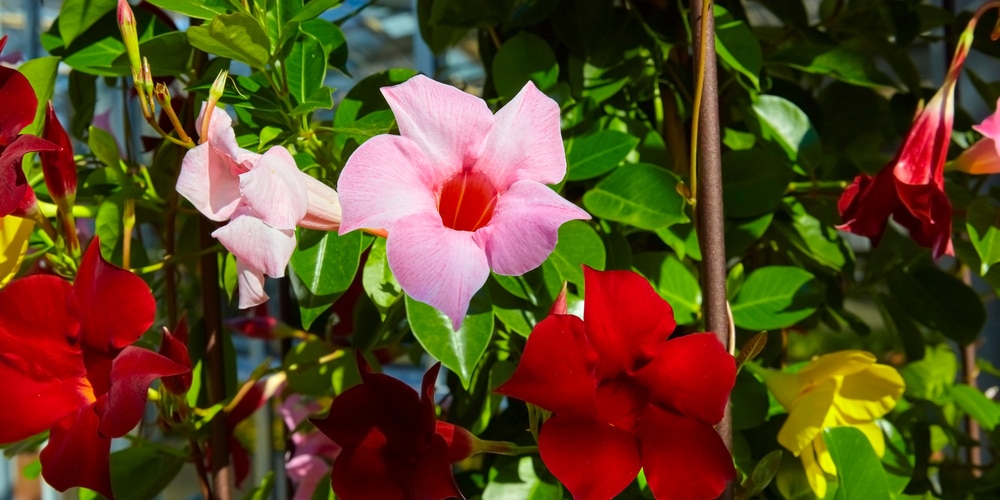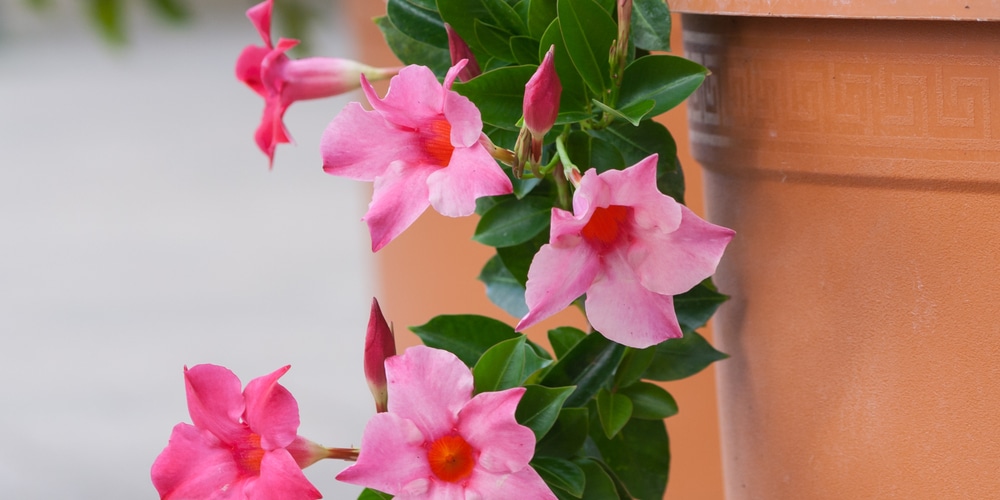Mandevilla plant care in winter can pose a challenge to the avid gardener. You need to know how to treat the Mandevilla plant in winter if you want your prized vine to survive the cold weather and still produce plenty of blooms next year. Mandevilla plant care in winter is sometimes tricky, as this tropical flowering plant is sensitive to the cold and vulnerable to frost damage. However, with the right steps, you can protect your Mandevilla plant.
Mandevilla plants are tropical vines that originate from the mountainous regions of South America. Your plant will need to be protected from the cold if it will survive in your region during winter. Let’s look at Mandevilla plant care in winter.
Mandevilla plant care in winter
Unless you live in an area that never gets below freezing, you will need to do something to protect your Mandevilla plant in the winter. If your conditions are right, you can simply keep the plants in the same containers they are growing in and let them sit outside.
Be warned, though – if there is a hard freeze, it could kill your plant. Fortunately, with just a little bit of TLC, your prized vine should be able to pass through winter untouched and ready to flower again next season. Here are some overwintering tips for a Mandevilla plant:
Bring your plant indoors
If you do decide to move your Mandevilla inside for the winter, you will need to take steps to bring it out of dormancy. Because Mandevillas are tropical plants, they will have stopped producing any growth or flowers once the days get shorter and cooler.
You can keep your plant in a cool room or greenhouse for the winter that has a temperature of around 50 degrees, with indirect sunlight. When the days start to lengthen and grow warmer, move your plant into a warm room out of direct sunlight and resume normal watering and fertilizing.
As for Mandevilla plant care during winter, once spring comes around, it is vital that you inspect your plant carefully before bringing it back outside. You may find pests such as spider mites or aphids, which you can easily treat by moving the plant outdoors and using a hose to spray it down thoroughly.
Shelter your Mandevilla Vine
In warmer areas, you may be able to leave your Mandevilla plant outdoors for the winter season. Move it into a sheltered corner so that it isn’t affected by strong winds and has some protection against rain. Be sure to cover your plant with some form of protection if there is even the slightest chance of a hard freeze.
Take cuttings from your plant
If you cannot move your plant indoors due to lack of space and are worried it may be killed or damaged this winter, it may be a good idea to take some cuttings from your plant.
You can propagate your Mandevilla plant but taking stem cuttings that are between 4 and 6 inches long. The cuttings can be placed in water until roots start to grow when they can then be planted in a pot.
Alternatively, dip the ends of the cutting in rooting hormone and then plant them in a pot in your home. This will mean that even if your Mandevilla plant dies or is damaged by frost, you’ll still have new plants for next season.
How to care for a Mandevilla plant during the winter months
It’s likely that your Mandevilla plant will start losing leaves during the winter due to the change in temperature. Even if you move your plant indoors, it may drop its leaves.
Your Mandevilla plant may become dormant in the winter but should be regularly watered to keep the soil moist. Be careful not to overwater your plant as this may cause root rot. It’s a good idea to test the soil to see if your plant requires water.
Conclusion
As long as you are aware of what to do for winter Mandevilla plant care, you should have no problem keeping your beautiful vine alive and healthy year after year. If your Mandevilla survives the winter and is thriving, be sure to start pruning early – any flowering parts of the plant that are close to the ground should be removed as soon as possible this spring to encourage new growth and more blooms.

